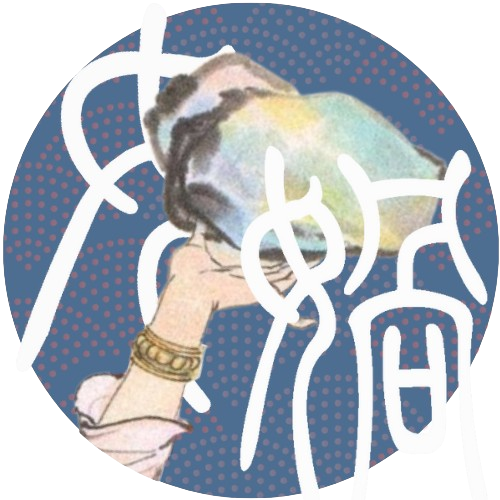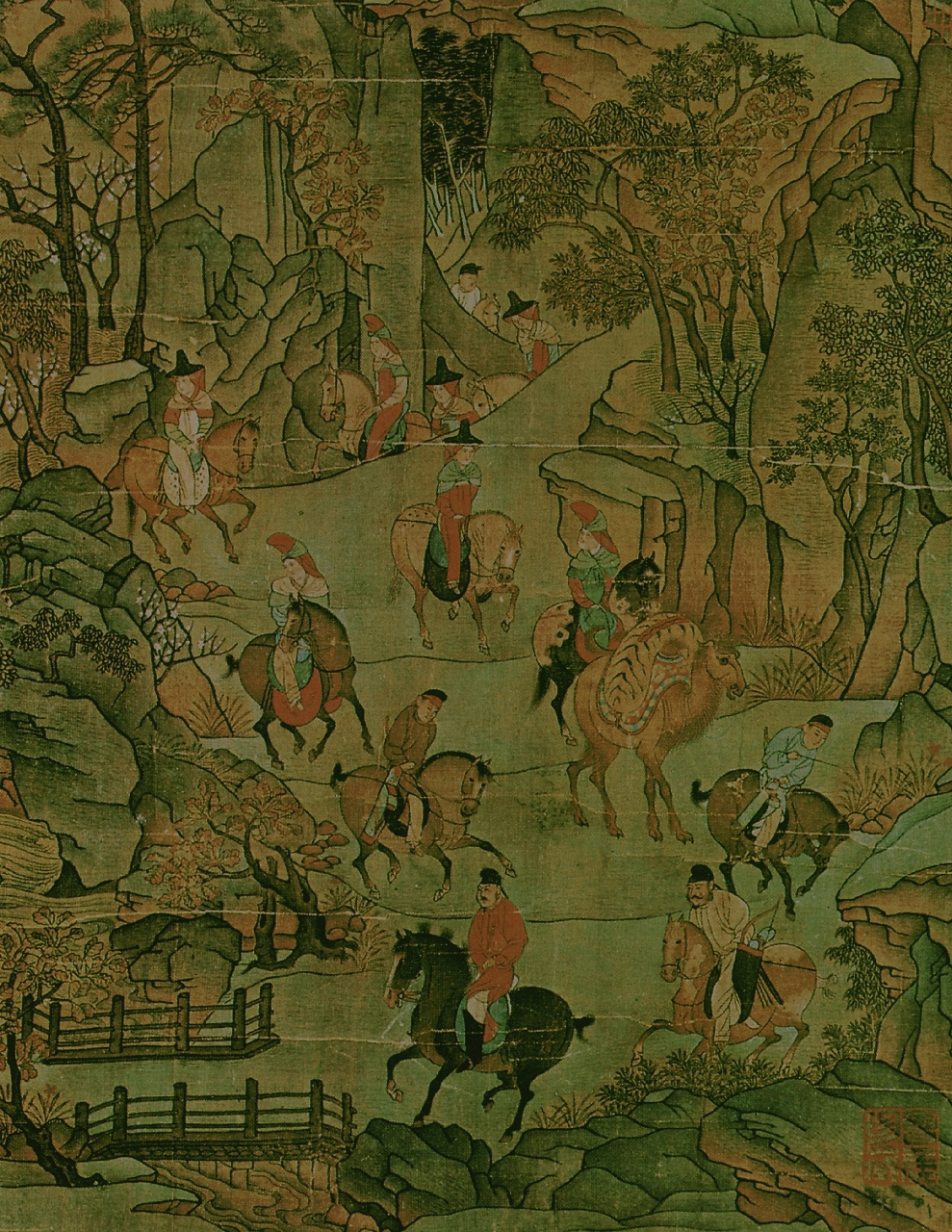Han Dynasty
202 BC – 220 AD
While the origins of Hanfu can be traced back to as early as the Shang Dynasty (1600 BC - 1045 BC), the Han Dynasty is widely regarded as the historical start of Han clothing.
Characterized by long, cross-collared robes tied at the waist called Shēnyī 深衣. The shēnyī came in two main forms:
- Qūjū 曲裾 - curved hem robe (pictured)
- Zhíjū 直裾 - straight hem robe
Both men and women could wear these robes interchangeably as they were a unisex item.
Towards the end of the Han, shēnyī were replaced by crossed-collar top & high-waisted skirt outfits called Rúqún 襦裙.
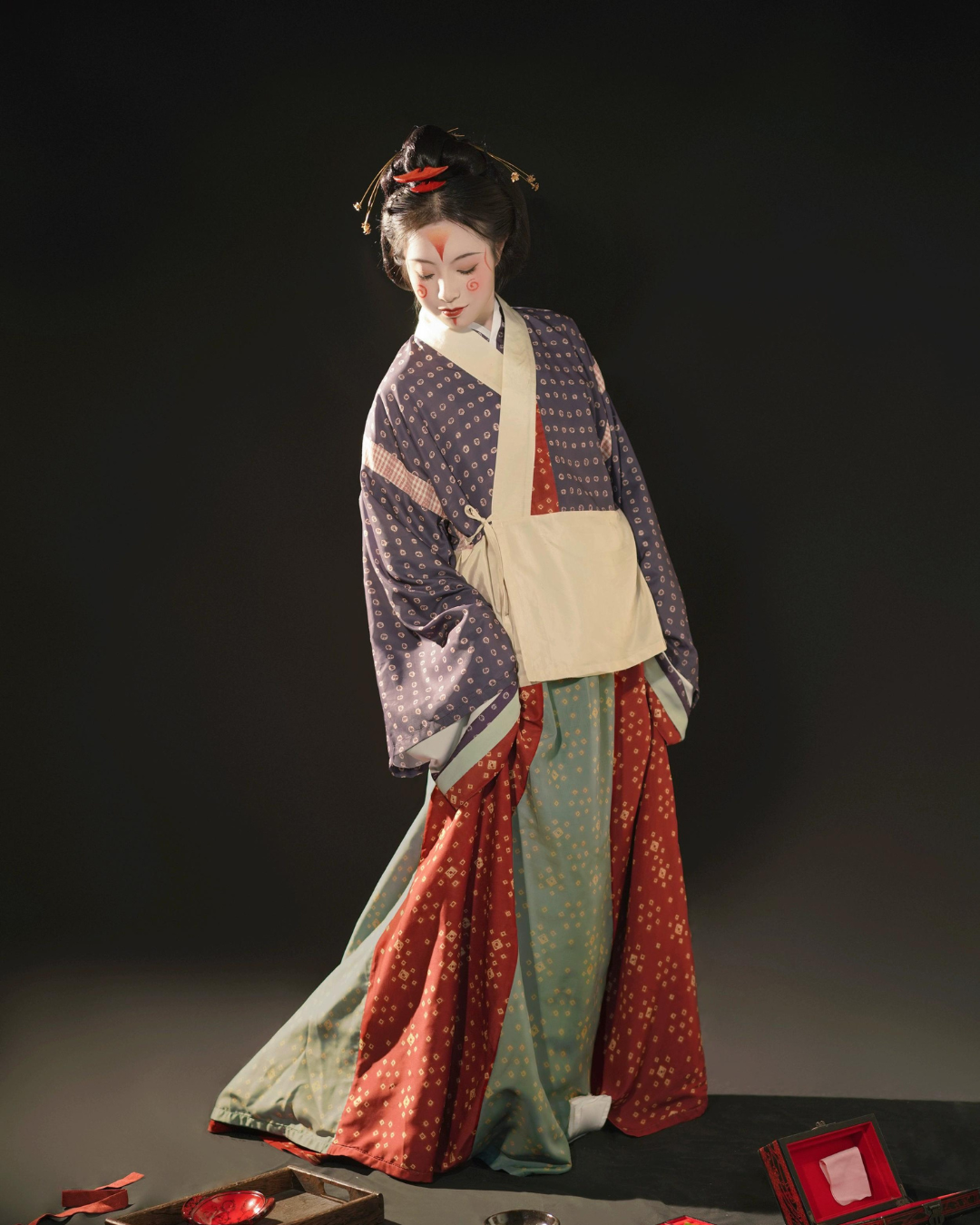
Northern Southern Dynasties
420 A.D - 589 A.D.
The Northern and Southern Dynasties is most renowned for its iconic female warrior Huā Mùlán 花木兰. However, was a pivotal era in Chinese history.
Despite continued political fragmentation and warfare, the Northern and Southern Dynasties witnessed extensive cultural exchange.
Buddhist monks, scholars, and artisans traveled between regions, spreading ideas, knowledge, and artistic techniques. Leading to a trend known as "The Immortals Style".
Women would paint their foreheads yellow to imitate gilded Buddhist statues, a makeup trend known as É'huáng 额黄.
To acheive the immortals style, women would tie the skirts of the rúqún 襦裙 higher, sitting directly under the bust.
Sleeves grew significantly longer and collars were pulled off-shoulder, revealing the undergarments. (Pictured)
Undergarments were the star of Northern Southern fashions and came in round-collared, boatneck, turtleneck, and vest constructions.
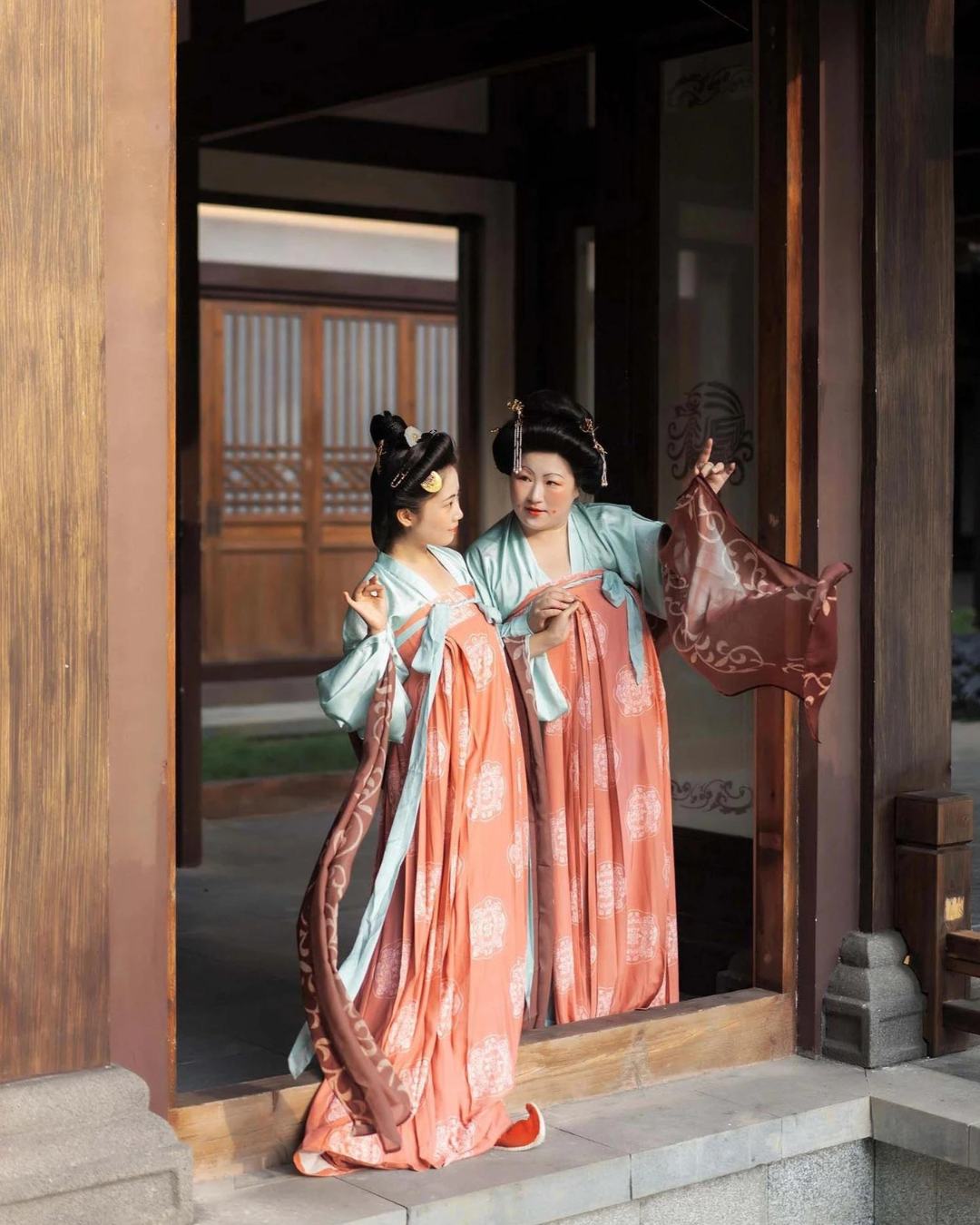
Song Dynasty
960 A.D. - 1279 A.D.
The Song Dynasty is often revered as one of the most illustrious periods in Chinese history, characterized by remarkable achievements in governance, culture, technology, and commerce.
China saw the rise of Neo-Confucianism as the dominant ideology, leading to a decline of women's position in society and a shift from bright fashions to a more subdued and feminine aesthetic.
Typically multilayered, Song Dynasty hanfu followed the same Rúqún 襦裙 formula, but characteristically featured delicate brocaded trims, floral embroideries, and pearl detailings.
Most outfits consisted of:
- Mǒxiōng 抹胸, a tube top like garment.
- Duǎnshān 短衫, a narrow sleeved cross-collar top.
- A long outer jacket called Bèizi 褙子, often decorated with floral brocade trims.
- Wide-leg Song pants called Sòngkù 宋裤.
- Either underneath a short overskirt called Wéichang 围裳
- Or under a long pleated skirt called BaiDieQun 百迭裙.
It all combines to create an elegant, sophisticated, and refined outfit.
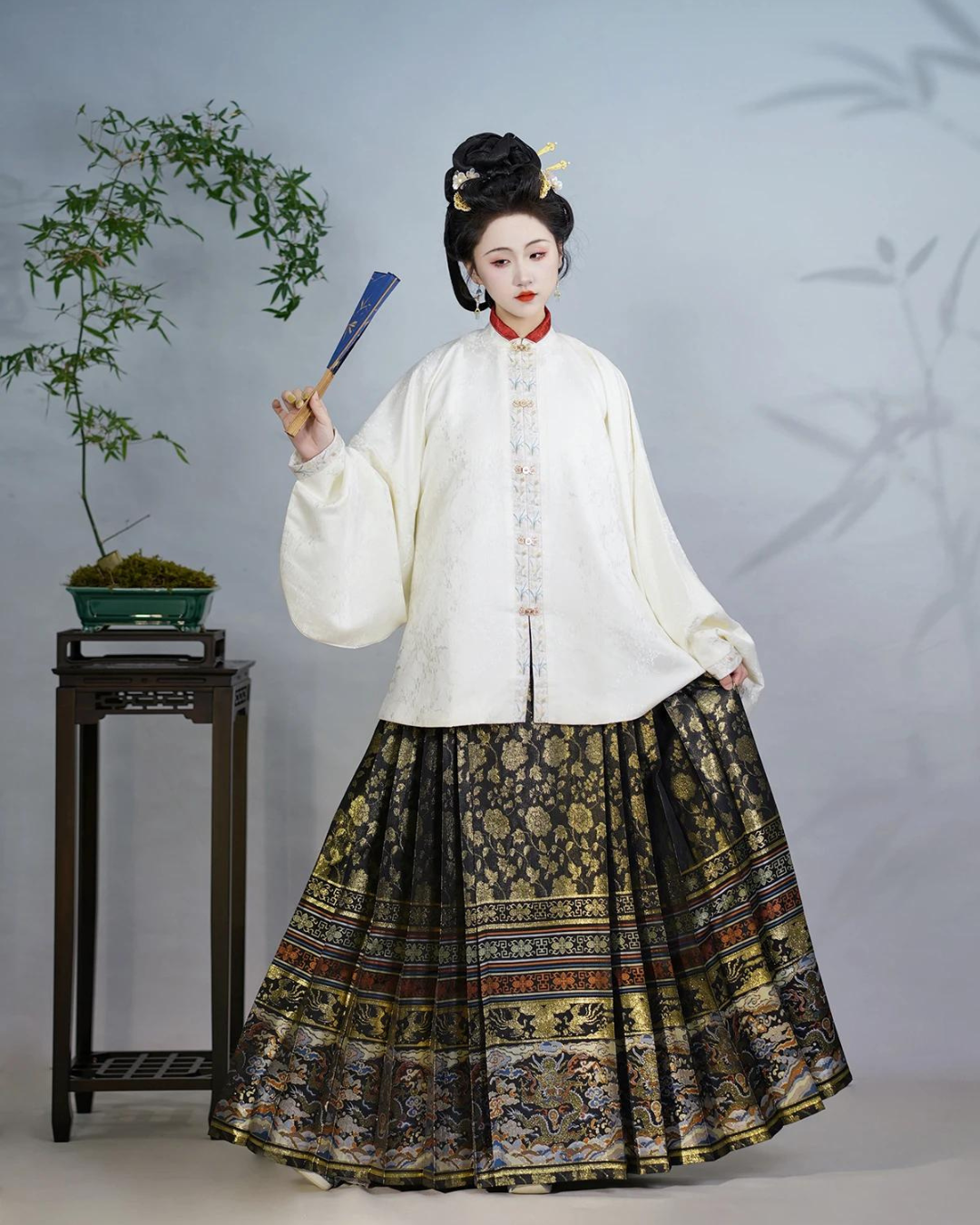
Modern Hanfu
With its official revival started by Wang Letian in 2003, the hanfu movement has amassed over 20 million hanfu enthusiasts from around its globe.
In recent times, designers take the liberty to expand on historical silhouettes, creating the contemporary revival and reinterpretation of traditional Han Chinese clothing style known as Hànyuánsù 汉元素.
Hànyuánsù is characterized by a resurgence of interest in traditional Han Chinese and transformed into a fusion of tradition and innovation, blending ancient aesthetics with modern fashion trends and techniques.
Designers and enthusiasts experiment with different fabrics, colors, patterns, and silhouettes to create unique and stylish Hanfu-inspired clothing for everyday wear, special occasions, and cultural events.
Hànyuánsù 汉元素 is often more approachable to beginners who would like to try Hanfu without investing in an expensive set & is popular for Hanfu enthusiasts who want to add a bit of Han element to their everyday outfits!
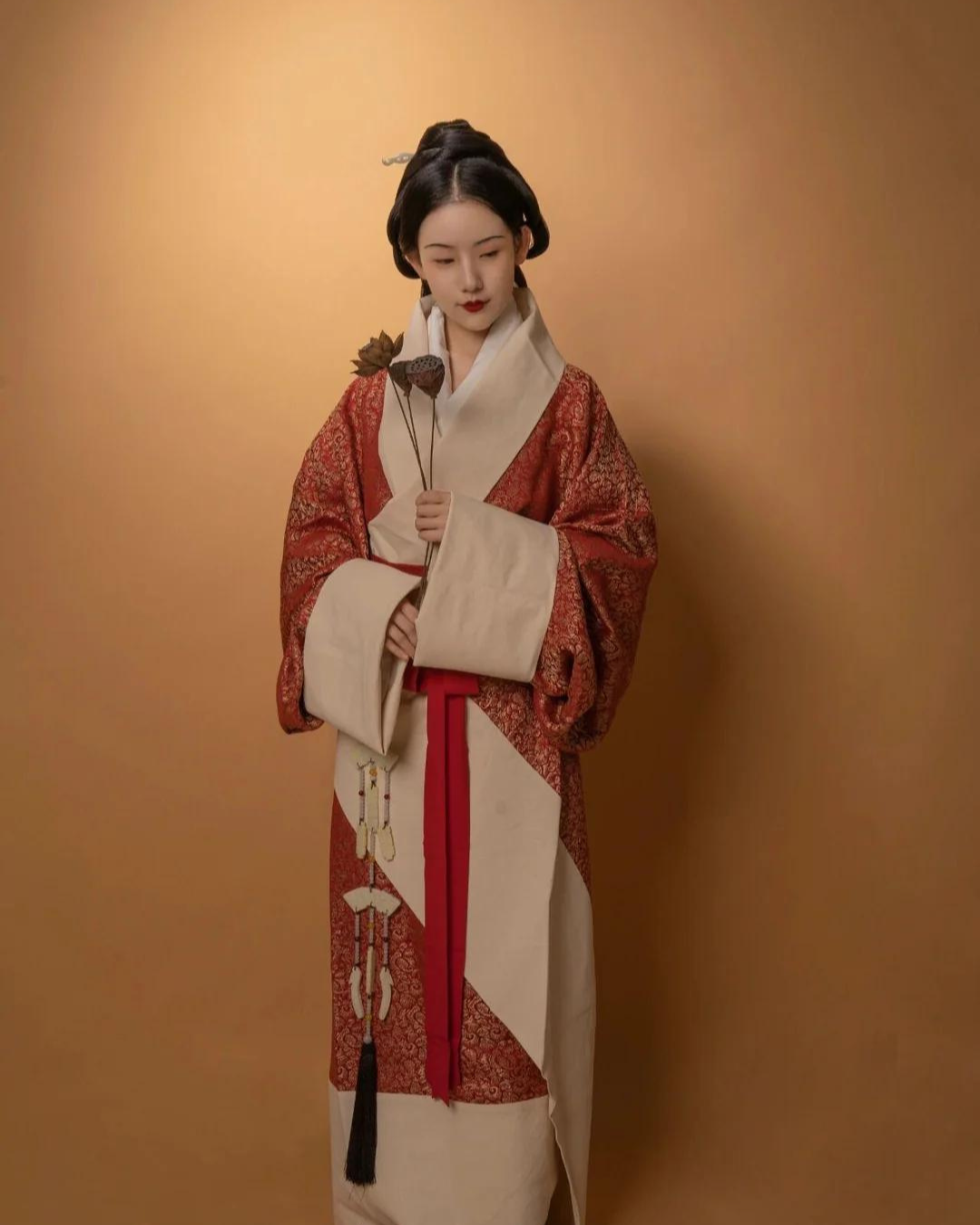
Wei Jin Dynasties
220 A.D. - 420 A.D.
The Wei Jin Dynasties is a collective term to describe the Wei & Jin dynasties that existed from the early 3rd century AD to the early 5th century AD.
Despite political turmoil, the Wei Jin period witnessed a flourishing of culture, arts, literature, and fashion!
Clothing during these eras were influenced by Buddhist murals of Gods and was called Guīyī 袿衣, or Zájū Chuíshāo Fú 杂裾垂髾服, which directly translates to "swallow-tailed hems and flying ribbons clothing".
Noblewomen wore long ribbons and triangular overskirts that imitated bird feathers.
For commoners, the rúqún 襦裙 was still the most popular style and came in many patterns & colors.
Often composed of a wide trim shirt called Yāolán Rú 腰襕襦 & long striped skirts called Pò Qún 破裙, or "broken skirts". Referring to the many strips of fabric used to make the skirt & stripe pattern. (Pictured)
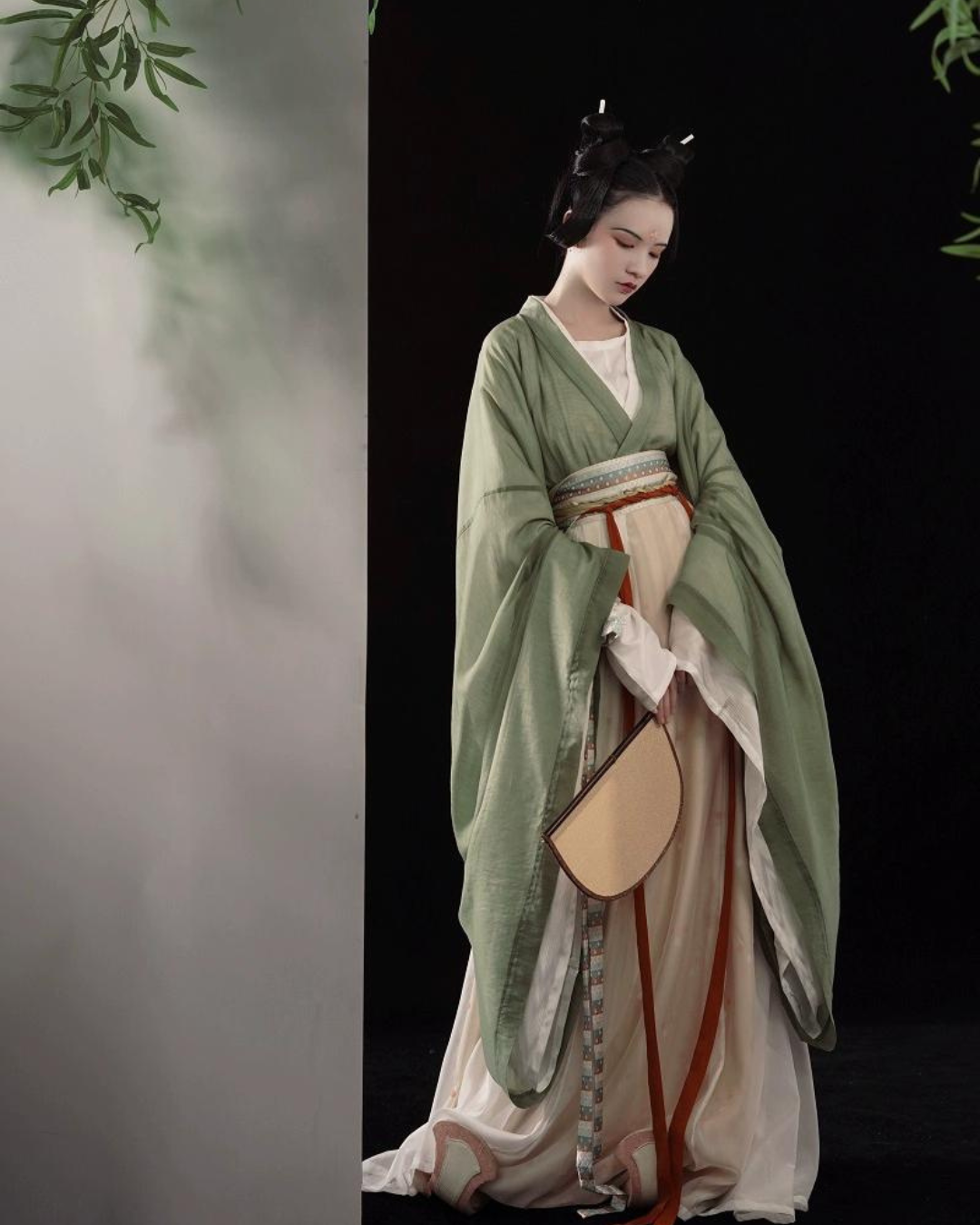
Tang Dynasty
618 A.D. - 907 A.D.
The Tang Dynasty, known as the Golden Age of China, was a time of flourishing economic growth, international cultural exchange, and cultural brilliance.
The Tang saw its first female emperor, Wǔ Zétiān 武则天 take the throne, allowing women to experience a surge in power and influence, often excelling in professional domains like politics, science, literature, arts, and more.
Fashion during the Tang reflected the empowerment of women and is often bright, colorful, exaggerated and ethereal.
During the Early Tang, slimmer pòqún 破裙 paired with short tops called bànbì 半臂 were a common outfit.
By the High to Late Tang, Qíxiōng Rúqún 齐胸襦裙, known for its chest-high silhouette, took the stage and is regarded as the hallmark of hanfu attire.
Paired with a long, decorative shawl called Pībó 披帛, Tang hanfu truly creates a goddess-like style.
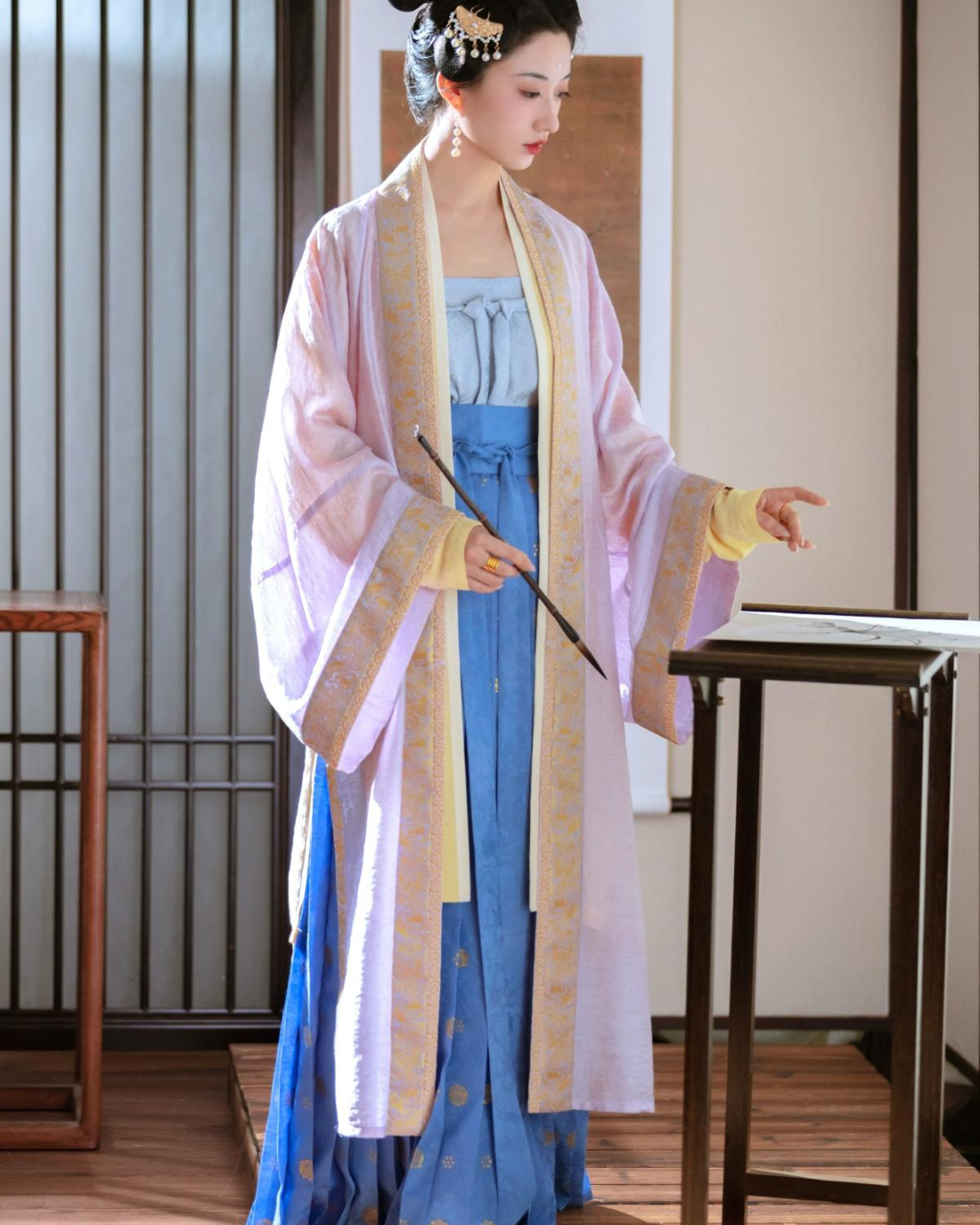
Ming Dynasty
1368 A.D. - 1644 A.D
The Ming Dynasty stands as one of the most culturally vibrant and politically stable periods in Chinese history.
With trade flourishing and extreme economic prosperity, Ming Dynasty advanced their textile and weaving production, elevating clothing for all social classes.
Resulting in a regal and conservative style of hanfu featuring long sleeves, high necklines, pleated skirts reaching the ankles, elaborate woven fabrics, and heavy brocades.
A common outfit during the Ming was called Ǎoqún 袄裙, a similar shirt & skirt formula as Rúqún 襦裙.
Ǎo 袄 refers to an untucked double-lined top. Constructed with either:
- large curved sleeves called pípá xiù 琵琶袖
- arrow sleeves called jiàn xiù 箭袖
Ladies would wear either a plain long pleated skirt called Mǎnzhé Qún 滿摺裙, or the iconic Ming Dynasty skirt: Mǎmiàn Qún 马面裙.
Translated as "horse face skirt", the Mǎmiàn 马面 was a long skirt constructed with a large panel on the front and back, and many pleats on the sides. (Pictured)
Of course, it has nothing to do with horses!
It gets its name from its construction similar to old war forts also called Mǎmiàn 马面.
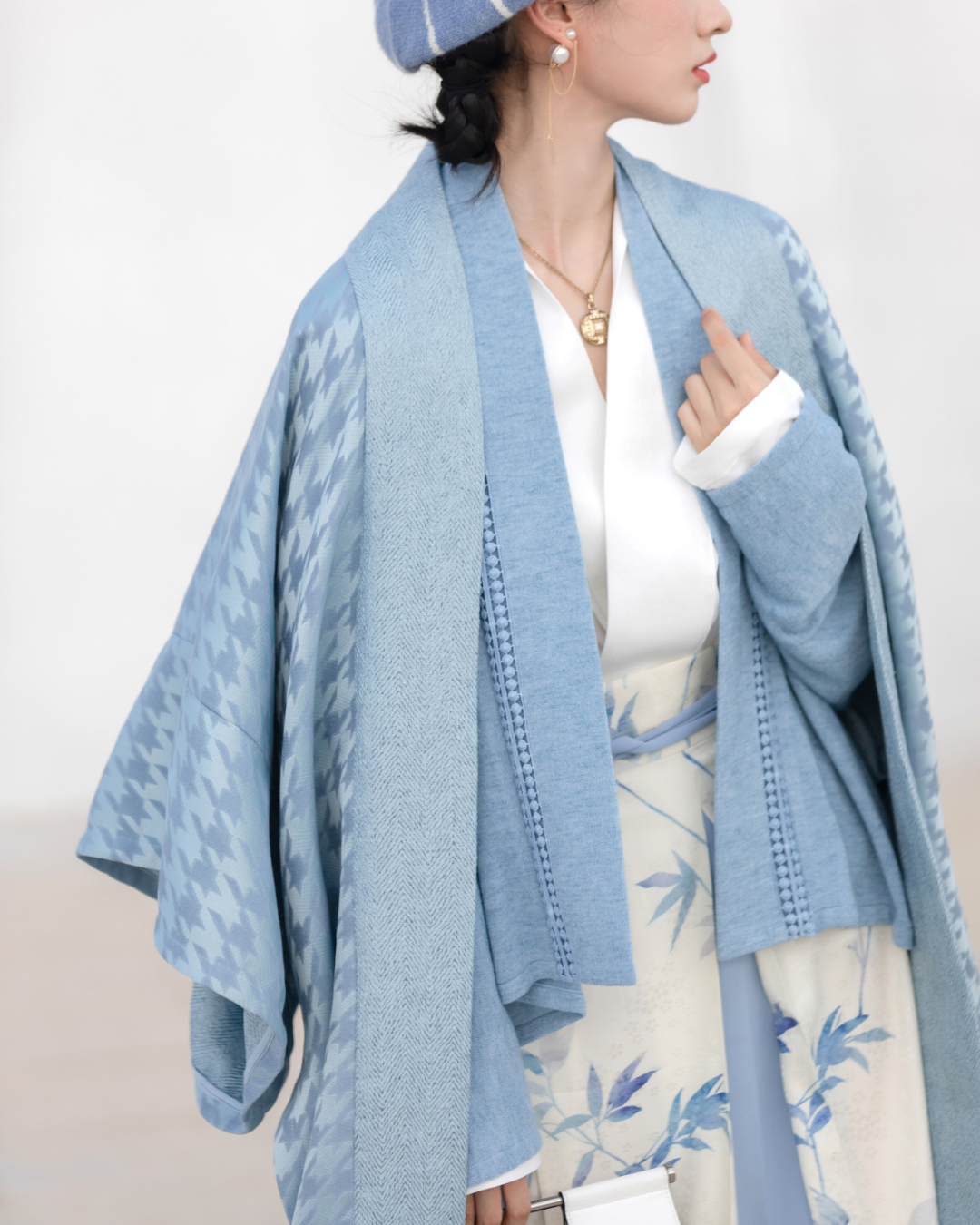

Han Dynasty
202 BC – 220 AD
While the origins of Hanfu can be traced back to as early as the Shang Dynasty (1600 BC - 1045 BC), the Han Dynasty is widely regarded as the historical start of Han clothing.
Characterized by long, cross-collared robes tied at the waist called Shēnyī 深衣. The shēnyī came in two main forms:
- Qūjū 曲裾 - curved hem robe (pictured)
- Zhíjū 直裾 - straight hem robe
Both men and women could wear these robes interchangeably as they were a unisex item.
Towards the end of the Han, shēnyī were replaced by crossed-collar top & high-waisted skirt outfits called Rúqún 襦裙.

Wei Jin Dynasties
220 A.D. - 420 A.D.
The Wei Jin Dynasties is a collective term to describe the Wei & Jin dynasties that existed from the early 3rd century AD to the early 5th century AD.
Despite political turmoil, the Wei Jin period witnessed a flourishing of culture, arts, literature, and fashion!
Clothing during these eras were influenced by Buddhist murals of Gods and was called Guīyī 袿衣, or Zájū Chuíshāo Fú 杂裾垂髾服, which directly translates to "swallow-tailed hems and flying ribbons clothing".
Noblewomen wore long ribbons and triangular overskirts that imitated bird feathers.
For commoners, the rúqún 襦裙 was still the most popular style and came in many patterns & colors.
Often composed of a wide trim shirt called Yāolán Rú 腰襕襦 & long striped skirts called Pò Qún 破裙, or "broken skirts". Referring to the many strips of fabric used to make the skirt & stripe pattern. (Pictured)

Northern Southern Dynasties
420 A.D - 589 A.D.
The Northern and Southern Dynasties is most renowned for its iconic female warrior Huā Mùlán 花木兰. However, was a pivotal era in Chinese history.
Despite continued political fragmentation and warfare, the Northern and Southern Dynasties witnessed extensive cultural exchange.
Buddhist monks, scholars, and artisans traveled between regions, spreading ideas, knowledge, and artistic techniques. Leading to a trend known as "The Immortals Style".
Women would paint their foreheads yellow to imitate gilded Buddhist statues, a makeup trend known as É'huáng 额黄.
To acheive the immortals style, women would tie the skirts of the rúqún 襦裙 higher, sitting directly under the bust.
Sleeves grew significantly longer and collars were pulled off-shoulder, revealing the undergarments. (Pictured)
Undergarments were the star of Northern Southern fashions and came in round-collared, boatneck, turtleneck, and vest constructions.

Tang Dynasty
618 A.D. - 907 A.D.
The Tang Dynasty, known as the Golden Age of China, was a time of flourishing economic growth, international cultural exchange, and cultural brilliance.
The Tang saw its first female emperor, Wǔ Zétiān 武则天 take the throne, allowing women to experience a surge in power and influence, often excelling in professional domains like politics, science, literature, arts, and more.
Fashion during the Tang reflected the empowerment of women and is often bright, colorful, exaggerated and ethereal.
During the Early Tang, slimmer pòqún 破裙 paired with short tops called bànbì 半臂 were a common outfit.
By the High to Late Tang, Qíxiōng Rúqún 齐胸襦裙, known for its chest-high silhouette, took the stage and is regarded as the hallmark of hanfu attire.
Paired with a long, decorative shawl called Pībó 披帛, Tang hanfu truly creates a goddess-like style.

Song Dynasty
960 A.D. - 1279 A.D.
The Song Dynasty is often revered as one of the most illustrious periods in Chinese history, characterized by remarkable achievements in governance, culture, technology, and commerce.
China saw the rise of Neo-Confucianism as the dominant ideology, leading to a decline of women's position in society and a shift from bright fashions to a more subdued and feminine aesthetic.
Typically multilayered, Song Dynasty hanfu followed the same Rúqún 襦裙 formula, but characteristically featured delicate brocaded trims, floral embroideries, and pearl detailings.
Most outfits consisted of:
- Mǒxiōng 抹胸, a tube top like garment.
- Duǎnshān 短衫, a narrow sleeved cross-collar top.
- A long outer jacket called Bèizi 褙子, often decorated with floral brocade trims.
- Wide-leg Song pants called Sòngkù 宋裤.
- Either underneath a short overskirt called Wéichang 围裳
- Or under a long pleated skirt called BaiDieQun 百迭裙.
It all combines to create an elegant, sophisticated, and refined outfit.

Ming Dynasty
1368 A.D. - 1644 A.D
The Ming Dynasty stands as one of the most culturally vibrant and politically stable periods in Chinese history.
With trade flourishing and extreme economic prosperity, Ming Dynasty advanced their textile and weaving production, elevating clothing for all social classes.
Resulting in a regal and conservative style of hanfu featuring long sleeves, high necklines, pleated skirts reaching the ankles, elaborate woven fabrics, and heavy brocades.
A common outfit during the Ming was called Ǎoqún 袄裙, a similar shirt & skirt formula as Rúqún 襦裙.
Ǎo 袄 refers to an untucked double-lined top. Constructed with either:
- large curved sleeves called pípá xiù 琵琶袖
- arrow sleeves called jiàn xiù 箭袖
Ladies would wear either a plain long pleated skirt called Mǎnzhé Qún 滿摺裙, or the iconic Ming Dynasty skirt: Mǎmiàn Qún 马面裙.
Translated as "horse face skirt", the Mǎmiàn 马面 was a long skirt constructed with a large panel on the front and back, and many pleats on the sides. (Pictured)
Of course, it has nothing to do with horses!
It gets its name from its construction similar to old war forts also called Mǎmiàn 马面.

Modern Hanfu
With its official revival started by Wang Letian in 2003, the hanfu movement has amassed over 20 million hanfu enthusiasts from around its globe.
In recent times, designers take the liberty to expand on historical silhouettes, creating the contemporary revival and reinterpretation of traditional Han Chinese clothing style known as Hànyuánsù 汉元素.
Hànyuánsù is characterized by a resurgence of interest in traditional Han Chinese and transformed into a fusion of tradition and innovation, blending ancient aesthetics with modern fashion trends and techniques.
Designers and enthusiasts experiment with different fabrics, colors, patterns, and silhouettes to create unique and stylish Hanfu-inspired clothing for everyday wear, special occasions, and cultural events.
Hànyuánsù 汉元素 is often more approachable to beginners who would like to try Hanfu without investing in an expensive set & is popular for Hanfu enthusiasts who want to add a bit of Han element to their everyday outfits!
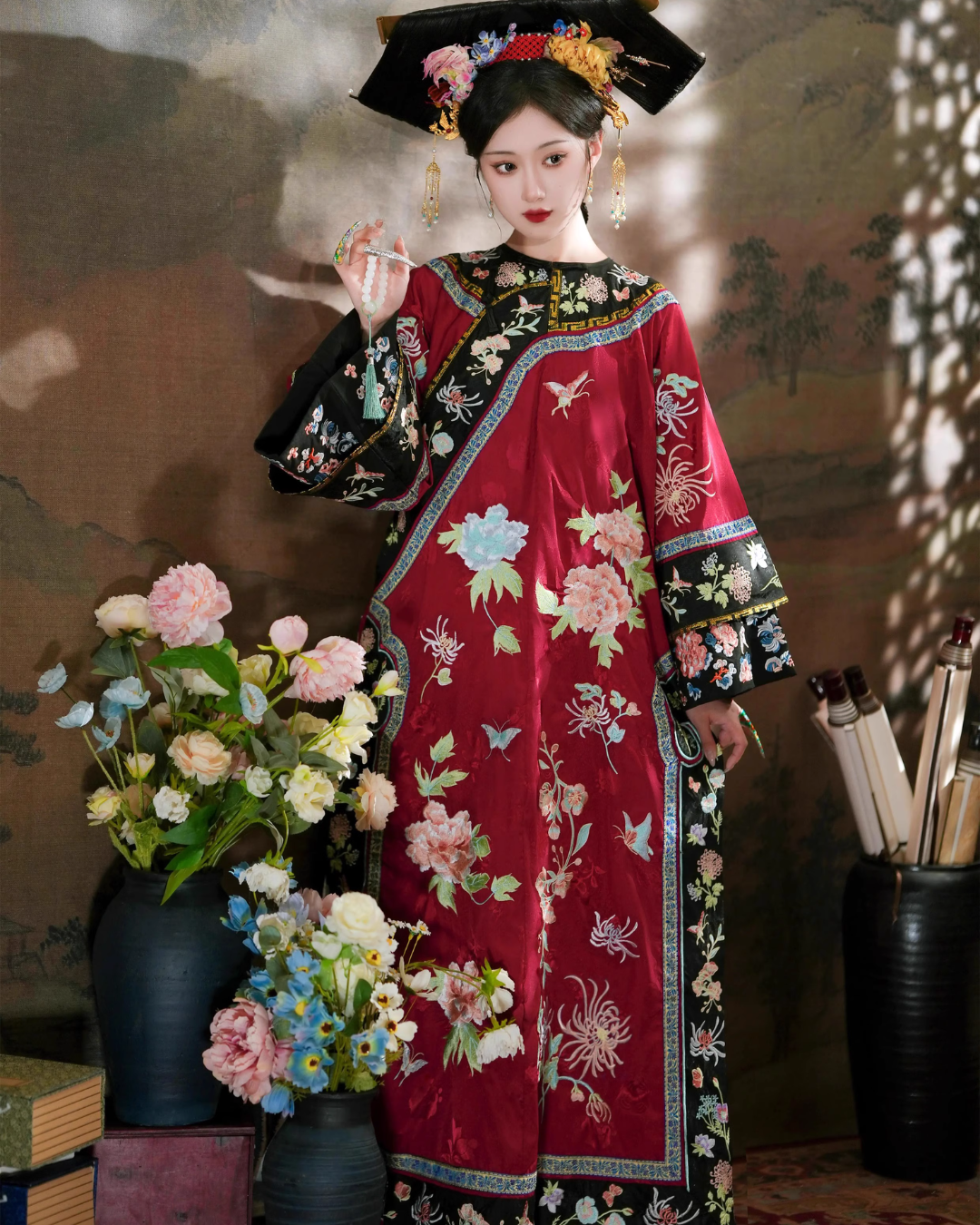
Republic of China
1912 A.D. - 1949 A.D.
Initially starting as Manchurian women's Chènyī 衬衣, the Qípáo 旗袍 has become the quintessential piece of Chinese today.
Directly translating as "Manchu dress", the qípáo, also known as the cheongsam, has undergone a fascinating evolution from its origins in the Qing Dynasty to its modern form.
During the Republic of China, the country experienced significant cultural and social changes, including increased interaction with Western countries.
The qipao underwent significant changes in its design and construction particularly in the Republican era.
Initially staying true to the loose-fitting chènyī, Western influences of wearing shorter dresses emerged in the 20s. The width of the cheongsam became slimmer, often paired with long pants or silk stocking.
Over time with continued Western influence, qipao became almost like a second skin, the iconic dress we know today.
The iconic silhouette of Republican era China qipao features the classic high collar and Chinese knot buttons, but with a comfortable loose waist and modest side slits.
Not as uncomfortable as modern day skin-tight qipao and not as over-bearing as big sets, 20th century qipao is a lovely and comfortable everyday outfit option.
Qing Dynasty
1644 A.D. - 1912 A.D.
The Qing Dynasty was the last imperial dynasty of China, noted by its vast territorial expansion, cultural flourishing, and striking fashions.
Under the Tìfā Yìfú 剃发易服, an imperial edict that banned traditional Han clothing, China's fashion would evolve into the exquisite garments most recognized around the world.
The outfits for women differed depending on if they were Manchurian or Han.
For Manchurian women, they wore Qízhuāng 旗裝, or "Manchu Clothing". Typically long one-piece robes called Chènyī 衬衣 with slits down the sides for ease of movement (pictured). Paired year-round with a white, scarf-like collar called Lónghuá 龍華.
Imperial consorts wore Chǎng Yī 氅衣, a formal version of the Chenyi.
For Han women, their clothing was still referred to as Hànfú 汉服 however in recent times is known as Qīng Hàn Nǚzhuāng 清汉女装 or "Qing Han women's clothing".
Han Chinese women continued their Ming Dynasty two-piece combinations of upper and lower garments, including the Ǎoqún 袄裙 & Rúqún 襦裙
Over time, Han Chinese women adopted elements from Manchu fashion, such as color schemes, embroidery, and binding, while retaining some Ming Dynasty features. (Pictured)
Han Skirts, like the mǎmiàn qún 马面裙, remained popular, with variations reflecting Qing Dynasty trends.
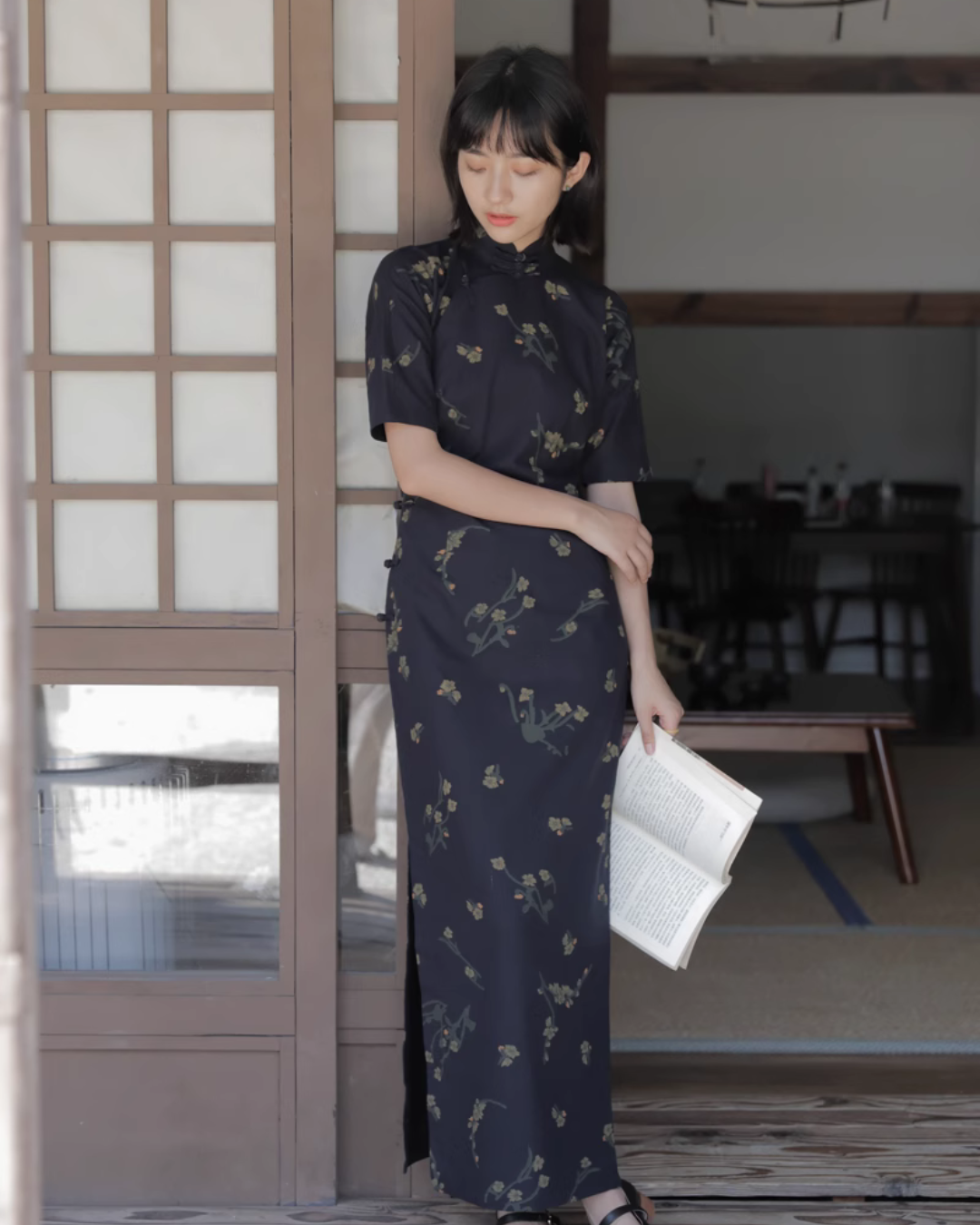

Qing Dynasty
1644 A.D. - 1912 A.D.
The Qing Dynasty was the last imperial dynasty of China, noted by its vast territorial expansion, cultural flourishing, and striking fashions.
Under the Tìfā Yìfú 剃发易服, an imperial edict that banned traditional Han clothing, China's fashion would evolve into the exquisite garments most recognized around the world.
The outfits for women differed depending on if they were Manchurian or Han.
For Manchurian women, they wore Qízhuāng 旗裝, or "Manchu Clothing". Typically long one-piece robes called Chènyī 衬衣 with slits down the sides for ease of movement (pictured). Paired year-round with a white, scarf-like collar called Lónghuá 龍華.
Imperial consorts wore Chǎng Yī 氅衣, a formal version of the Chenyi.
For Han women, their clothing was still referred to as Hànfú 汉服 however in recent times is known as Qīng Hàn Nǚzhuāng 清汉女装 or "Qing Han women's clothing".
Han Chinese women continued their Ming Dynasty two-piece combinations of upper and lower garments, including the Ǎoqún 袄裙 & Rúqún 襦裙
Over time, Han Chinese women adopted elements from Manchu fashion, such as color schemes, embroidery, and binding, while retaining some Ming Dynasty features. (Pictured)
Han Skirts, like the mǎmiàn qún 马面裙, remained popular, with variations reflecting Qing Dynasty trends.

Republic of China
1912 A.D. - 1949 A.D.
Initially starting as Manchurian women's Chènyī 衬衣, the Qípáo 旗袍 has become the quintessential piece of Chinese today.
Directly translating as "Manchu dress", the qípáo, also known as the cheongsam, has undergone a fascinating evolution from its origins in the Qing Dynasty to its modern form.
During the Republic of China, the country experienced significant cultural and social changes, including increased interaction with Western countries.
The qipao underwent significant changes in its design and construction particularly in the Republican era.
Initially staying true to the loose-fitting chènyī, Western influences of wearing shorter dresses emerged in the 20s. The width of the cheongsam became slimmer, often paired with long pants or silk stocking.
Over time with continued Western influence, qipao became almost like a second skin, the iconic dress we know today.
The iconic silhouette of Republican era China qipao features the classic high collar and Chinese knot buttons, but with a comfortable loose waist and modest side slits.
Not as uncomfortable as modern day skin-tight qipao and not as over-bearing as big sets, 20th century qipao is a lovely and comfortable everyday outfit option.
